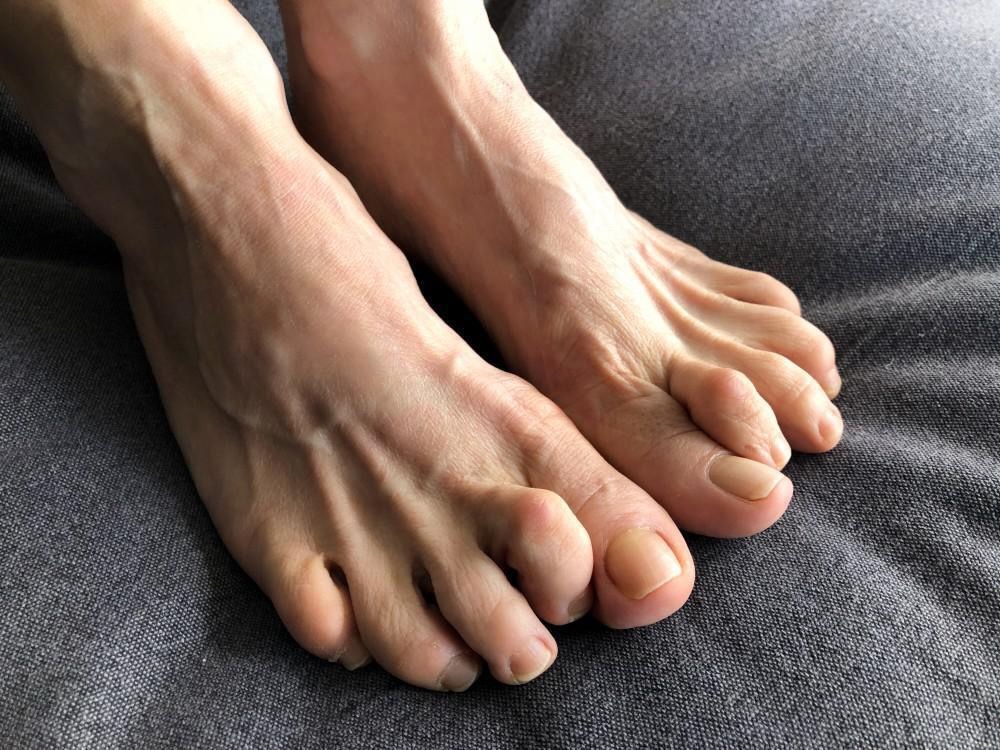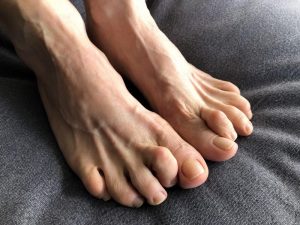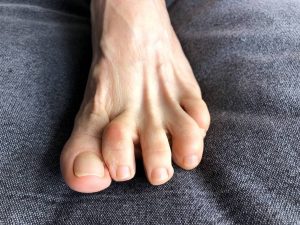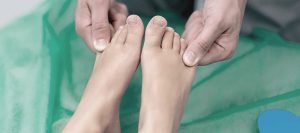
Of the many foot and ankle conditions we treat at JAWS Podiatry, hammertoe can be one of the most painful and cause the most problems. Fortunately, hammertoe is almost always treatable. Sometimes it can be treated by changing footwear, using protective padding, and reducing calluses. Often, however, truly resolving the problem requires surgery. We understand that no one wants to have surgery, and we’ll explore less-invasive treatment options first. But if hammertoe surgery is the best or only option, it is important for patients to understand what to expect from the procedure.
More and more people are getting foot surgery to correct different conditions with a steady increase over the course of the last decade, and surgeries to correct hammertoe are among the many minimally invasive treatment options we perform at JAWS Podiatry.
The moniker, hammertoe, derives from the fact that a toe afflicted with this condition is said to resemble a hammer.

Hammertoes are caused by an abnormal bend in the toe as they always occur on the middle joints of the lesser toes.
If untreated surgically, they worsen and are known to be extremely painful.
This is especially true when wearing closed shoes, which force the bent toe to rub against the upper part of the shoe. An unwanted corn can also develop as a result of this constant friction.
What Is The Difference Between Hammertoes Vs Mallet Toe?
These two terms refer to similar but slightly different conditions.
While both a hammertoe and mallet toe usually occur in the second, third and fourth toes, their main difference lies in the location of the bend.
With a hammertoe, the bend is in the middle joint and the toe curves downward like a claw, and with a mallet toe, it is the upper toe joint nearest the toenail that is affected, and the tip of the toe remains bent.
What Are The Causes and Symptoms of Hammertoe?
While symptoms will vary from person to person, there are certain unmistakable signs that are almost always present in one degree or another in all hammertoes.
Wearing ill-fitting shoes, like those with pointed toes and high heels, can cause both hammertoe and mallet toe. Women are more likely to develop these conditions for this reason.

Other causes include: genetics (flat, flexible feet and high arches); foot injury (stubbed, jammed or broken toes) and certain illnesses, such as rheumatoid arthritis and diabetes.
Sometimes too, the cause of this condition may not be established.
Symptoms include: reoccurring pain from wearing shoes; difficulty in moving the affected toe; stiffness of toe; redness and swelling and the growth of calluses and corns from constant rubbing against shoes or the ground.
Although rare, open sores can also be symptomatic of hammertoe.
The affected digit may be able to remain unbent for a while, but it is likely that the tendons and joints will tighten over the course of time. This complication may require surgical intervention.
Diagnosis and Treatment
Like so many things in life, early detection is the key to avoiding any type of surgery, and as all good surgeons know, it should only be considered as a last resort.
Diagnosis is determined via a physical exam and x-rays, and treatment is evaluated according to the rigidity and severity of your toe joint.
Some conservative options for hammertoe include: anti-inflammatory drugs or cortisone injections, which aid in reducing pain and redness; orthotics such as custom shoe inserts for improved foot function and taping and/or padding, which serve to alter the imbalance around the toes and alleviate pain and stress.
Some health providers might also suggest that you perform exercises to stretch and strengthen toe muscles.
One popular one includes using toes to pick up marbles or scrunch a towel. If however, all fail to alleviate pain and suffering, surgery is the only sustainable answer.
Be Your Own Medical Advocate
We must all take responsibility for our own health care, which means doing our homework by asking vital questions as well as listening carefully to advice from the experts.
Some Basic Questions Include:
- What tests do I need?
- What is the success rate percentage?
- What is the best course of action?
- Why am I a good candidate for surgery?
- Will this condition reoccur?
Professional Surgeons Will Always Make The Following Inquiries:
- How much pain are you experiencing?
- Where exactly is the pain?
- What if anything, improves your symptoms?
- What type of shoes do you usually wear?
What To Expect From Hammertoe Surgery
Understanding surgery can help you make a sound decision. For hammertoes, the procedure can be simple or complex.
In less complicated instances, podiatrists remove the bony projection and restore the normal alignment of the toe. Surgical correction is usually performed on the middle joint.
The Surgical Procedures For Hammertoe Surgery
If left untreated, your toe stays fixed in place and can be very painful. Hammertoes can reach the point where standing or walking is positively excruciating.
Surgical correction is out-patient and no hospital stay is necessary.
The bone is removed and surrounding ligaments adjusted. Surgery can correct the deformity and improve your quality of life. Whether or not it is worth the risk is a question that only you can answer.
Proximal Interphalangeal is the most common procedure performed. Also known as PIP Joint Fusion, it permanently fuses the two bones in the affected digit, thereby straightening and stabilizing the toe.
A stainless steel K-wire is inserted, which is a pin that holds your bone ends in place for three to six weeks and is then removed.
Two other surgical possibilities include: Tendon Transfer and Joint Resection.
The former concerns a redirecting of the tendons from the bottom of the toe to the top, and the latter is a procedure that involves the removal of the ends of the bone of the affected joint and the placement of the toe in a straight position held temporarily by pins.
The Recovery Time For Hammertoe Surgery
The recovery time for hammertoe surgery can vary depending on the type of surgery and the severity of your condition, but it generally takes 6 to 8 weeks.
First and foremost, to assist with recovery, we recommend using our Foot Faja Compression Sock, available on Amazon. It is engineered to address post-operative swelling and discomfort, providing gentle yet firm compression to reduce swelling and promote optimal blood circulation. This support is essential for a quicker and smoother recovery process.

Additionally, the following are some things you can expect during this important stage:
- You will be wearing a boot or hard-soled shoes immediately after surgery and you can expect to bear weight on your foot at this time.
- Showering is fine as long as the bandage itself is kept dry.
- Expect to walk with minimal pain or discomfort after two to four weeks, but understand that walking or standing for longer periods may take up to six weeks or even longer.
- You may be able to wear sneakers and other comfortable shoes after three to four weeks.
- Forget about driving for as long as four to six weeks afterward.
- Depending on your job and how quickly your body heals, recovery may require up to a month or more before you can return to work.
Other Aids To Expedite A Good Recovery
A physical therapist can aid in learning how to get about with crutches or a walker and teach you exercises that will improve both balance and strength.
You can also reduce your recovery time by propping up your leg on a few pillows for the first few days after surgery, limiting walking, maintaining a clean and dry bandage and taking sponge baths if you cannot completely cover your foot with a plastic bag when you shower.
For an ounce of prevention that’s worth a pound of cure as the old saying goes, contact JAWS Podiatry immediately if you should experience bleeding or increased swelling around the wound, wire or pin, or discomfort that does not abate after you take pain medication.
Is Hammertoe Surgery Worth it?
This surgery is generally safe and effective and can provide long-term relief from pain and satisfactory toe function.
A common risk is the possibility of your hammertoe recurring, but at the same time, this minimally invasive procedure reduces the risk of infections, improves the appearance of the toe and increases success rates.
Some Key Tips To Prevent Hammertoe
The ideal situation of course would be to avoid surgery of any kind. Taking the following suggestions can help a great deal in preventing the development of this painful condition.
- Look for shoes that fit well and provide enough toe room and avoid pointed-toe shoes.
- Stick with low heels. Glamorous though they may be, high heels are demons in disguise that cause hammertoe and back problems.
- Shoes that adjust are always safe. Laces and straps make shoes easier to suit personal comfort.
- Shop for shoes at the end of the day because feet tend to swell over the course of the day.
- Always check for shoe size, particularly width, because it often changes with age.
- Measure both feet and always buy for the larger foot.
- Only buy shoes that fit as soon as you try them on. While shoe repair shops can stretch them a bit, it is better to buy shoes that don’t need adjustment.
- Buy shoes that fit right away. Be sure shoes are comfortable before you buy them. A shoe repair store might be able to stretch tight spots, but it’s better to buy them to fit.
Contact Our Teams For Any Hammertoe Issues
Hammertoe surgery is just one of the many podiatric surgical and non-surgical procedures we perform at JAWS Podiatry.
Our foot and ankle specialists will explore all possible alternatives to see if a non-surgical solution can address your problem.
But if we do recommend surgery, our experienced podiatrist will perform your procedure with the utmost care and precision, using the most advanced technology and methods.
Please call us today at (954) 922-7333 or schedule a consultation.
- Foot Care Tips – The Ultimate Guide To Healthy Feet - February 11, 2025
- How To Use A Pumice Stone To Remove Tough Skin - December 15, 2024
- How To Choose The Best Toenail Clippers For Seniors - August 8, 2024



